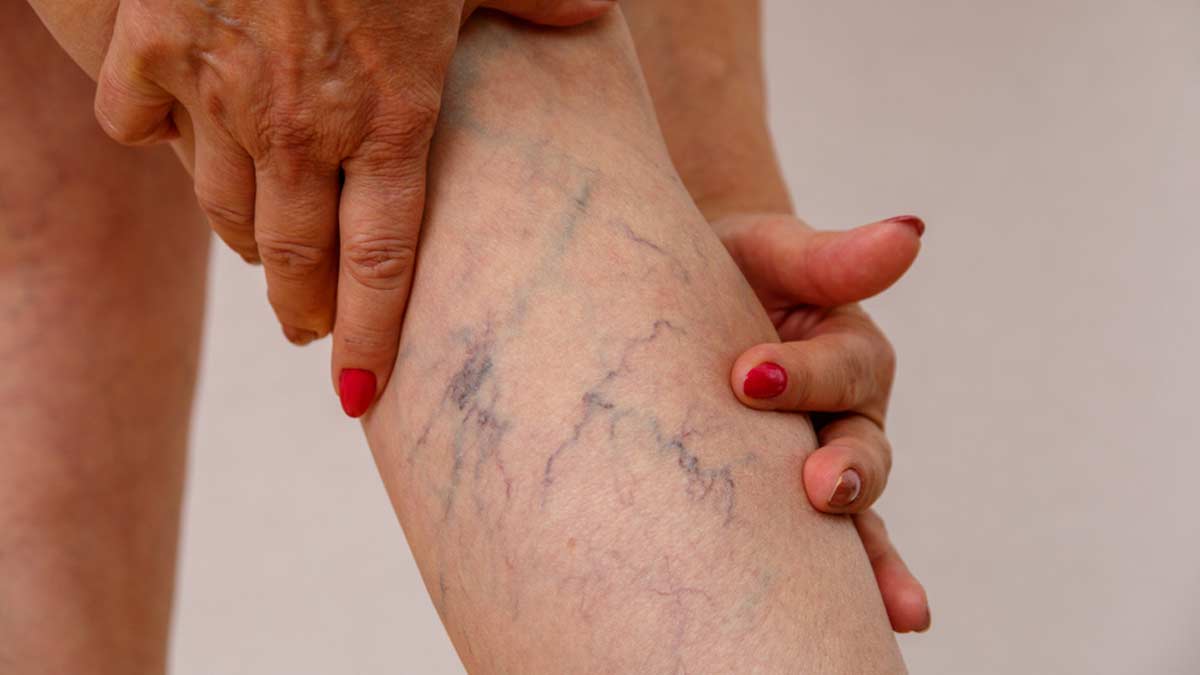
If you've come across swollen, twisted veins on your legs, they could either mean varicose veins or spider veins. Both conditions occur due to damaged blood vessels. Many people use the two terms interchangeably. However, it is important to note that even though varicose and spider veins share some similarities, they are different. In an interaction with the OnlyMyHealth team, Dr Umesh Satish Gheewala, Consultant - Vascular Surgery And Endovascular Surgery, SPARSH Hospital, Bengaluru, explains the difference between the two and ways to manage them.
Table of Content:-
Also Read: Deep Vein Thrombosis Vs Pulmonary Embolism: Experts Share Key Differences
What Are Spider Veins?

Spider veins, also known as reticular veins or telangiectasis, are small veins measuring about 0.2 to 0.3 millimetres in diameter, explains Dr Gheewala, adding that spider veins usually don't cause much trouble other than cosmetic concerns, although some people may experience occasional pain or itching.
Research suggests that most people will eventually develop some form of spider veins during their lives, with 30–50 years as the typical age of presentation.
What Are Varicose Veins?
Just like spider veins, varicose veins can appear as red, blue, and purple lines; however, they are larger and measure greater than or equal to three millimetres.
Up to 30% of the general population reports the condition, with a higher prevalence in older adults and people with a family history of varicose veins, as per StatPearls Publishing.
Spider Veins Vs. Varicose Veins

Spider veins and varicose veins are both characterised by twisted, bulging veins. However, they have key differences.
While varicose veins are larger, raised, and often rope-like, typically appearing on the legs, spider veins are much smaller, closer to the skin's surface, and resemble webs or tree branches.
Varicose veins can be painful and may cause leg swelling, but spider veins are usually painless but can be cosmetically bothersome.
Also Read: "If It Isn't Varicose Veins, What's Causing My Veins To Bulge" Expert Shares Possible Reasons
While both stem from vein issues, varicose veins in symptomatic patients usually require treatment.
This involves a combination of methods, such as using micro-flavonoids, wearing compression stockings, and sometimes surgical intervention like open surgery or endovenous laser therapy, he advises.

For symptomatic spider veins, foam sclerotherapy is often sufficient for treatment in most cases, he adds, recommending a few ways to prevent the condition. These include:
- Avoid standing in one position for too long.
- Use compression stockings.
- Consult a vascular surgeon for advice.
Conclusion
Spider and varicose veins are common vascular conditions that can affect individuals of various ages. While often considered a cosmetic concern, these conditions can also lead to discomfort and complications if left untreated. This is more true for varicose veins, which are more severe than spider veins and require treatment. Additionally, lifestyle modifications like regular exercise, maintaining a healthy weight, and wearing compression stockings can help alleviate symptoms and prevent them from progressing.
How we keep this article up to date:
We work with experts and keep a close eye on the latest in health and wellness. Whenever there is a new research or helpful information, we update our articles with accurate and useful advice.
Current Version